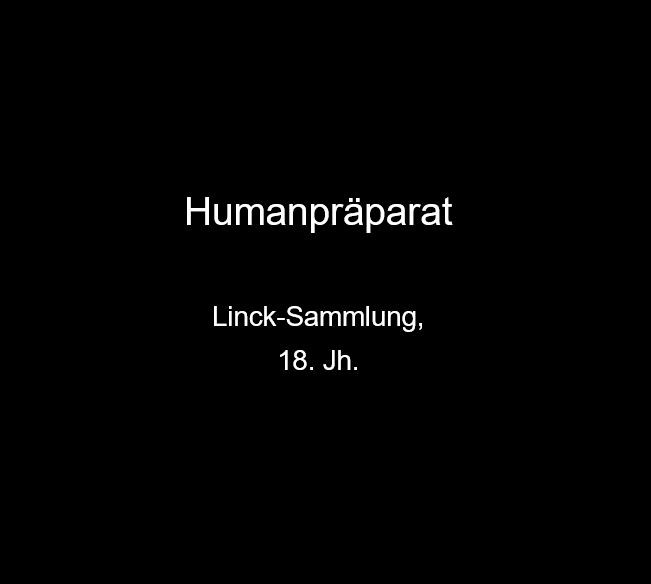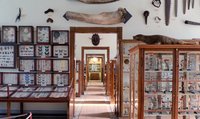Fötus mit Fehlbildungssyndrom, konserviert in einem mundgeblasenen Glas mit Spiritus. - 1735 kam dieses Kind im letzten Schwangerschaftsdrittel in Taucha bei Leipzig tot zur Welt. Es war das vierte Kind der damals 28-jährigen Johanna Sophia und Andreas Schmied. Die Quellenlage überliefert, dass die Mutter aufgrund der außergewöhnlichen Fehlbildungen den Arzt Gottlieb Friderici aus Leipzig kommen ließ. 1737 veröffentlicht Friderici nach der Obduktion des Fötus einen medizinischen Bericht und gab das Präparat des Fötus in die Sammlung der Lincks.
Während Friderici und die Lincks noch ratlos über die Ursache der Fehlbildungen waren, ist heute bekannt, dass der Fötus mit einem Verlust auf dem Chromosom 17 (Deletion) zur Welt kam. Es ist der weltweit einzige Beleg für dieses Syndrom.
Belegt im Linck-Index I. (1783), No. 25: "Ein Kind von Gestalt eines Hahnes, bey Leipzig in Taucha 1735 geboren. Ein Mehreres ist aus der Diss. D. Friderici zu ersehen."
en

